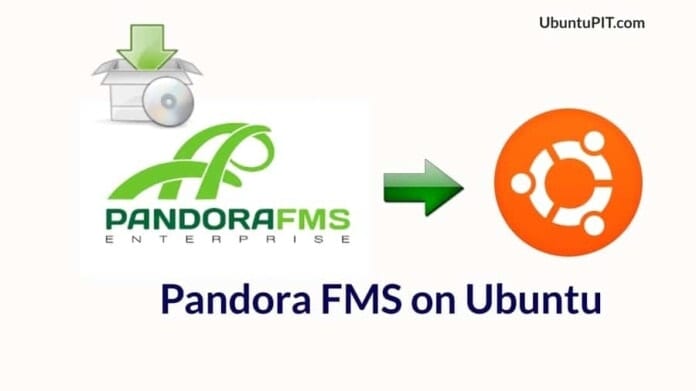Joomla is one of the oldest open sources and PHP based framework which allows the users to build websites with a full Content Management System (CMS). Joomla claims that they have around 2 million active websites over the internet worldwide, which definitely means that Joomla is actually a giant content management system (CMS). To build your website, you can install Joomla on your Ubuntu Linux. It’s really very simple and easy to use Joomla, and you don’t need to know any HTML or CSS.
Joomla on Ubuntu Linux
The Joomla CMS can be installed through a web server. In this case, as we are using the Ubuntu operating system, so we will be using the Apache server to host the Joomla website. There are options in your hand, you can either directly install the Apache server on Ubuntu, or you can install the Xampp server inside your machine then active the Apache server from the Xampp service. Today we are going to learn how to install Joomla on Ubuntu. As we are dealing with Ubuntu, so using the Apache server directly will be the best option.
Step 1: Get the Ubuntu System Updated
As we are going to install the Apache server and PHP on our Ubuntu machine, so it’s very much important to keep our machine up to date. This will get you the latest security patch and repository.
$ sudo apt update -y && sudo apt upgrade -y
You can also use the Ubuntu ‘Software & Update’ to check whether there is any update available or not.
$ sudo apt update -y $ sudo apt upgrade -y
Step 2: Get Apache and PHP on Ubuntu Linux
PHP language is mostly configurable and compatible with web servers and platforms. As we are going to install the Joomla on Ubuntu, so we are am going to install PHP and Apache server on our Ubuntu machine. If your machine doesn’t have the Curl installed, you need to install the Curl first. The Curl is a repository grabber form weblink. It will grab the PHP installer files on Ubuntu.
$ sudo apt install curl
Now you can get the PHP repository installed on your Ubuntu machine.
$ sudo add-apt-repository ppa:ondrej/php
Now use the following terminal command line to get PHP and Apache server. Then you can check whether PHP is installed on your machine or not, by checking the PHP version.
$ sudo apt install apache2 libapache2-mod-php7.2 openssl php-imagick php7.2-common php7.2-curl php7.2-gd php7.2-imap php7.2-intl php7.2-json php7.2-ldap php7.2-mbstring php7.2-mysql php7.2-pgsql php-smbclient php-ssh2 php7.2-sqlite3 php7.2-xml php7.2-zip
If everything is done perfectly, you will get your Apache server activated. Normally the Apache server is found under the localhost address. You can check your Apache server address with the basic net tool commands. In this case the ifconfig terminal command can find the localhost IP address.
$ php -v

Once you are done installing the Apache server, now it’s time to do some primary settings for the Apache server. Use these following terminal commands to start, enable, and check the status of your Apache server.
$ sudo systemctl start apache2 $ sudo systemctl enable apache2
Now you can check the status of the Apache server with the systemctl command from the terminal on Ubuntu.
sudo systemctl status apache2

Step 3: Installing MariaDB for Joomla
The Joomla requires at least one database language to interact with the Joomla database, and as we are going the use the MySQL database, so we have to install and configure the MariaDB on our Ubuntu machine. Then we will also be creating a specific database for Joomla. Although, once the Joomla is installed on ubuntu, we can change the database if we need it. But for now, MariaDB is fine.
$ sudo apt install mariadb-server
After installing the MariaDB, we can now get inside the root of the database for further security settings. We can change the database password, grand any other user, associate with the Apache server from the MariaDB settings.
$ sudo mysql_secure_installation
Now we have to create a database for Joomla in MySQL. We will be using the basic database commands to create and set the database. After the database creating is done, we need to flush the settings then exit from the database.
$ sudo mysql -u root -p CREATE DATABASE joomla_db; GRANT ALL ON joomla_db.* TO 'ubuntupit'@localhost IDENTIFIED BY '1234'; FLUSH PRIVILEGES; EXIT;

You can check the database that you just created form the terminal command-line interface.
sudo mysql -u root -p show databases;

Step 4: Downloading Joomla on Ubuntu Linux
Here comes the main part of this post, installing the Joomla itself on the Ubuntu machine. We will be using the wget command to download the compressed version of Joomla, and next, we will unzip it inside the Joomla directory on Ubuntu.
$ sudo wget https://downloads.joomla.org/cms/joomla3/3-9-16/Joomla_3-9-16-Stable-Full_Package.zip
After the download is finished, now we have to create a directory for Joomla to be unzipped.
$ sudo mkdir /var/www/html/joomla

Before you start extracting the downloaded zip file of the Joomla, let me tell you, you might get an error of unable to get root access. Even if you log in as a root user in the terminal, you may face that problem anyway. To get rid of that problem, all you need to do is just change the ownership of that folder from root to your current user. You can use the chown command in the terminal.
$ sudo chown jahid -v /var/www/html/joomla
Now you can unzip the Joomla zip file inside the desired folder. You must remember the directory where the Joomla is being unzipped. Because later, we will need that file path.
$ sudo unzip Joomla_3-19-16-Stable-Full_Package.zip -d /var/www/html/joomla $ sudo unzip Joomla_3-9-4-Stable-Full_Package.zip
Now I assume, downloading and extracting Joomla is done so far. Now we have to configure the Joomla settings for our local usages. We will be using either the Vim or Nano text editor to edit the Joomla configure file on Ubuntu.
If you don’t have the Vim installed inside your machine, simply install it from the terminal command line.
$ sudo apt install vim
Now open up the joomla.conf file with the editor and add the following settings inside the configuration file. Then save and close the file.
$ sudo vim /etc/apache2/sites-available/joomla.conf
Again, if you cant access the joomla.con file from the terminal, you might need to change the root permission too of those files.
$ sudo su $ sudo chown jahid -v /etc/apache2 $ sudo chown jahid -v /etc/apache2/sites-available/.joomla.conf.swp
Now you can unzip the Joomla package inside the desired directory with full access.
$ sudo unzip Joomla_3.19-16-Stable-Full_package.zip -d /var/www/html/joomla
You might need to change the root administrator access to edit the Joomla setting script.
$ sudo chown -R www-data:www-data /var/www/html/joomla $ sudo chmod -R 755 /var/www/html/joomla
Use the systemctl command to restart the Apache server system.
$ sudo systemctl restart apache2
To configure the Joomla server, you can use the Vim or the Nano editor. Open the Joomla.conf file in Nano editor. Now you have to add the following configuration settings inside the .conf file. Now save it and exit the file.
$ sudo nano /etc/apache2/sites-available/joomla.conf
Now copy and pest the script settings inside your Joomla configuration file with the Nano Editor.
VirtualHost *:80>
ServerAdmin admin@example.com
DocumentRoot /var/www/html/joomla/
ServerName example.com
ServerAlias www.example.com
ErrorLog ${APACHE_LOG_DIR}/error.log
CustomLog ${APACHE_LOG_DIR}/access.log combined
<Directory /var/www/html/joomla/>
Options FollowSymlinks
AllowOverride All
Require all granted
</Directory>
</VirtualHost>Now to active and allow your host files to get the Apache settings, run the a2enmod Apache script commands on your Ubuntu machine.
$ sudo a2ensite joomla.conf $ sudo a2enmod rewrite

Finally, I hope you have done all the settings and configurations correctly until now. By this, your system might get the Joomla installed and enabled. Now you should reload your Apache server and allow the Apache setting script to be rewritten. Then, restart your Apache server again.
$ systemctl reload apache2 $ systemctl reload apache2 $ sudo a2enmod rewrite $ systemctl restart apache2 $ sudo systemctl restart apache2
Step 5: Getting Access from the Firewall Settings
As we have installed a server and a database inside our Ubuntu machine, it’s necessary to get the proper firewall access so that our site won’t get blocked by the internal network security system. We will be using the uncomplicated firewall ufw commands to check, enable, and disable the firewall settings.
$ sudo ufw enable $ sudo ufw status
If you know the HTTP address and port of your website, you can make a specific security clearance from the firewall settings.
$ sudo ufw allow 80/tcp
And, in the same way, to deny the firewall access for any website use the following command lines.
$ sudo ufw deny 56/tcp $ sudo ufw allow from 192.168.0.1
To allow all the HTTP sites, use this command line in your Ubuntu terminal line.
$ sudo ufw allow http
Step 6: Getting started with Joomla on Ubuntu Linux
Here you go, now once the localhost webpage of the Apache server is opened in your web browser, just add a forward slash / and add Joomla then hit the Enter button. If everything is done, you should get the Joomla login page. Create an ID with email and other credentials. Here you can change the PHP version you need and change the SQL engine if you need it. But I am going to leave them as default.
Now, after all the settings are done, you need to delete the temporary installation folder of Joomla. Once you have deleted the folder, you will be redirected to the Joomla login page. Use your credentials and login to the Joomla CMS. Here you go, your Joomla is ready to be used.

Once you have got access to the Joomla login page, you can choose all the settings from the web login interface page. The settings are very much easy to set up. Here you can choose the name of your website, username, database type, and other settings. Once you are done, you will get the option to delete the dummy database/installation folder. Then you will automatically be redirected to the login page again.
 This is the Joomla site administrator page, where you will be asked your username and password to enter inside the site.
This is the Joomla site administrator page, where you will be asked your username and password to enter inside the site.

Don’t forget to check your .htaccess file from the Apache server folder, if you find any kind of problem to reach the login page. Normally it takes ten minutes to get the Joomla started. If it takes more than that, check inside your PHP configuration setting file. You need to change execution time and the memory limit settings from the PHP runtime configuration file. The file must be named as php.ini. Open that file with Nano or Vim editor, then enter the following script settings inside the phprc file.
max_execution_time = 3000 ; memory_limit=128M ;
Final Thoughts
This post is all about how to get started with Joomla on Ubuntu Linux. At the end of this post, I would like to remind you of some common mistakes that you might do. Be careful while you unzip the Joomla files and configure the settings. Change your Ubuntu user root permission if requires. And one more thing, if you’re using the Skype application on the same Ubuntu machine, make sure that the network port of the Skype and the Apache server is not the same. By default, Skype sometimes blocks the Apache server port.
I have tried to make all the installation and configuration processes clear to everyone. And, all the steps are described with corresponding images for better understanding. I hope you find this post useful and informative. If you are already a Joomla user, you can share your experiences with us. Write your comments in the comment section and also share this post on your social media so that others can also learn about Joomla.



Missing `<` in the joomla.conf configuration.
Also, I lost SSH access to the server after I did this. Any clues? Thanks.
Taher
Was able to get 3.10.6 running March 13. Thank you!
Thanks for your detailed guide.
I followed it and I got Joomla 3.9.20 up and running inmediatelly.
I need to do some maintenance to a Joomla site that has been up and running for a while in Joomla 3.6.5.
I want to make the changes locally, in a localhost, with a copy of the real site.
My doubt is regarding the files that I need to extract from the backup to copy to /var/www/html/otherjoomla.
Do you have any guide available regarding this process?
Best regards
LUIS